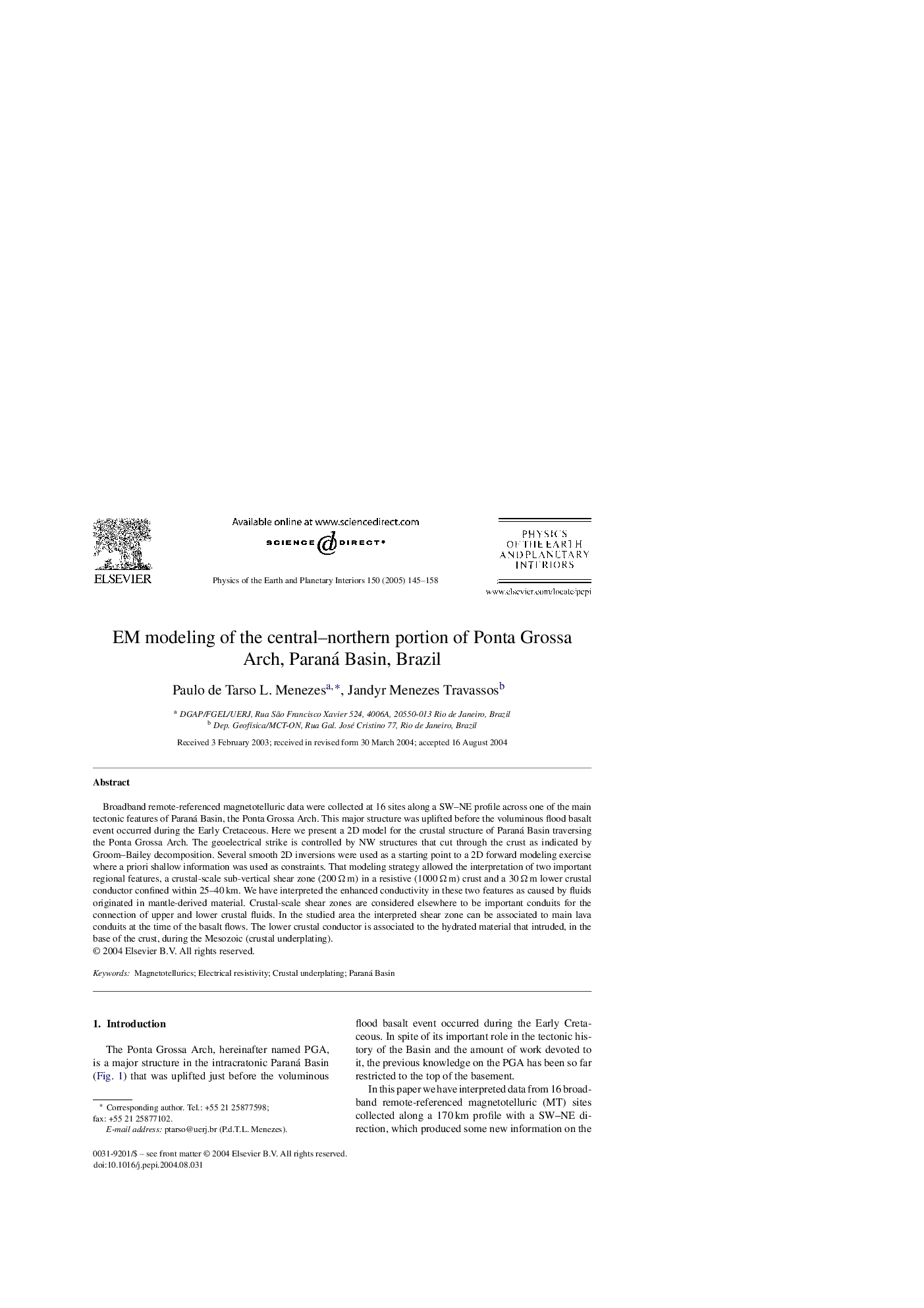| Article ID | Journal | Published Year | Pages | File Type |
|---|---|---|---|---|
| 10121341 | Physics of the Earth and Planetary Interiors | 2005 | 14 Pages |
Abstract
Broadband remote-referenced magnetotelluric data were collected at 16 sites along a SW-NE profile across one of the main tectonic features of Paraná Basin, the Ponta Grossa Arch. This major structure was uplifted before the voluminous flood basalt event occurred during the Early Cretaceous. Here we present a 2D model for the crustal structure of Paraná Basin traversing the Ponta Grossa Arch. The geoelectrical strike is controlled by NW structures that cut through the crust as indicated by Groom-Bailey decomposition. Several smooth 2D inversions were used as a starting point to a 2D forward modeling exercise where a priori shallow information was used as constraints. That modeling strategy allowed the interpretation of two important regional features, a crustal-scale sub-vertical shear zone (200 Ω m) in a resistive (1000 Ω m) crust and a 30 Ω m lower crustal conductor confined within 25-40 km. We have interpreted the enhanced conductivity in these two features as caused by fluids originated in mantle-derived material. Crustal-scale shear zones are considered elsewhere to be important conduits for the connection of upper and lower crustal fluids. In the studied area the interpreted shear zone can be associated to main lava conduits at the time of the basalt flows. The lower crustal conductor is associated to the hydrated material that intruded, in the base of the crust, during the Mesozoic (crustal underplating).
Related Topics
Physical Sciences and Engineering
Earth and Planetary Sciences
Geophysics
Authors
Paulo de Tarso L. Menezes, Jandyr Menezes Travassos,
